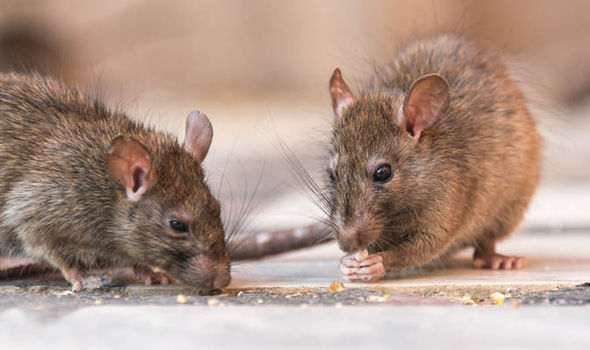the Impact of Website Speed on User Experience and SEO
Are you looking to improve the performance of your pest control website? Boosting site speed is essential for a powerful online presence.
In this article, you’ll discover how website speed impacts user experience and SEO for your pest control website . Engage your audience and climb the search engine rankings by optimizing your website’s performance.
Learn effective strategies and tools to enhance your site speed and dominate the pest control industry.
Take control of your website’s success today!
The Importance of Site Speed for Pest Control Websites
Improve your pest control website’s performance by prioritizing the importance of site speed. Site speed optimization plays a crucial role in enhancing user experience and boosting your website’s search engine optimization (SEO) efforts.
When it comes to pest control websites, loading time is of utmost importance. Users expect fast and seamless browsing experiences, and a slow-loading website can result in frustration and high bounce rates. Additionally, search engines like Google consider site speed as a ranking factor, impacting your website’s visibility and organic traffic.
To optimize site speed, there are several strategies you can implement. First, minimize HTTP requests by reducing the number of elements on your webpages. This can be achieved by consolidating CSS and JavaScript files, and avoiding excessive use of external scripts.
Second, compress images to reduce their file size without compromising quality. Large image files can significantly slow down your website, so using tools like compression algorithms or plugins can help optimize image loading times.
WILDFIRE SEO AND INTERNET MARKETING
720 McClure Rd.
Kelowna, BC.
V1W-1M3
Phone: 250.575.1527
Third, enable browser caching to store certain elements of your website on a user’s device. This allows subsequent visits to load faster as the browser can retrieve these stored elements instead of downloading them again.
Furthermore, consider using a content delivery network (CDN) to distribute your website’s content across multiple servers worldwide. This can help improve site speed by delivering content from servers closer to the user, reducing latency and improving overall performance.
User Experience: How Website Speed Impacts Engagement
Boost the engagement of your pest control website by understanding how website speed impacts user experience.
User retention and conversion rates are crucial metrics for a successful website. Slow-loading pages can frustrate users, leading to high bounce rates and reduced user retention. When a website takes too long to load, visitors may lose interest and abandon the site, resulting in missed opportunities for conversions.
On the other hand, a fast-loading website creates a positive user experience, keeping visitors engaged and increasing the chances of conversion. Research has shown that even a one-second delay in page load time can lead to a significant drop in conversion rates.
SEO Benefits: How Site Speed Affects Search Engine Rankings
Enhancing your website’s speed directly impacts its search engine rankings. Search engines like Google prioritize websites that offer a seamless user experience, and site speed is a critical factor in determining that experience. When your website loads quickly, it reduces bounce rates and improves user engagement, signaling to search engines that your site is valuable and relevant.
Site speed metrics, such as Time to First Byte (TTFB) and First Contentful Paint (FCP), are used by search engines to evaluate website performance. A slow website loading time can negatively affect your search engine rankings, pushing your site down in the search results.
Strategies to Boost Site Speed for Pest Control Websites
To increase site speed for your pest control website, implement effective strategies.
Content optimization is crucial in improving page load times for pest control websites. Start by reducing the size of your images and videos without compromising their quality. Compressing files and using lazy loading techniques can also help speed up page rendering.
Additionally, prioritize mobile responsiveness to ensure fast website speed for mobile users in the pest control industry. Optimize your website for mobile devices by using responsive design and minimizing unnecessary elements. Consider implementing Accelerated Mobile Pages (AMP) to further enhance loading times on mobile devices.
Regularly monitor your website’s performance using tools like Google PageSpeed Insights and make necessary adjustments to maintain optimal site speed.
Tools and Techniques for Optimizing Website Performance
You can optimize your website performance by utilizing various tools and techniques.
One important aspect of optimizing website performance is conducting a website speed analysis. This involves using tools such as Google PageSpeed Insights or GTmetrix to analyze your website’s load time and identify areas for improvement. These tools provide valuable insights into how your website performs and offer suggestions for optimizing various elements like images, scripts, and CSS.
Another technique for improving website performance is performance testing. This involves simulating real-world user interactions to measure the performance of your website under different conditions. Tools like Apache JMeter or LoadRunner can help you conduct performance tests and identify bottlenecks in your website’s performance.
Boosting site speed is crucial for pest control websites. It enhances user experience and improves SEO rankings.
A fast-loading website keeps users engaged and satisfied. This leads to increased conversions and customer loyalty.
Additionally, search engines prioritize faster websites. This results in improved visibility and higher organic rankings.
By implementing effective strategies and utilizing optimization tools, pest control websites can optimize their performance. This helps them stay ahead of the competition in the digital landscape.



